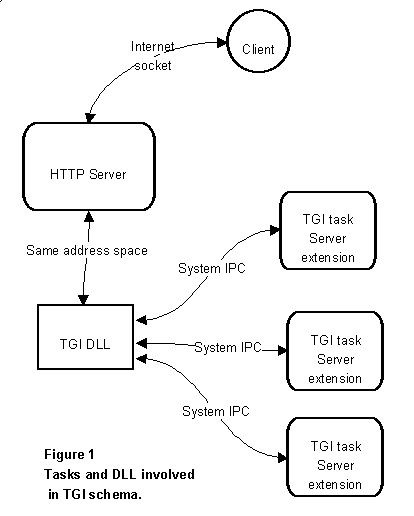Datenbank und HTTP: Das Protokoll
HTTP
"HTTP is an application level protocol with the lightness and speed necessary for distributed, collaborative, hypermedia information systems. It is a generic, stateless, object-oriented protocol which can be used for many systems, through extension of its request methods (commands)."
(Internet Task Force)
Schwächen von/durch HTTP
- Information von Seite zu Seite übernehmen schwer möglich
- Zuordnung von HTTP-requests zu einem Benutzer
- hohe Serverbelastung durch CGI
- Öffnen und Schließen von Datenbankverbindungen, je CGI-Script
da
- zustands- und verbindungslos
siehe auch The ILU Requester: Object Services in HTTP Servers und Why ILU?
Lösungs-Ansatz zustandslos
z. B. virtual shopping cart, http://www.egrafx.com/minishop
Lösungs-Ansatz verbindungslos
- Apache's (http://www.apache.org) fastCGI, konservativer als TGI, Verbindung über stdin/stdout (Spezifikation)
- TGI (Task Gateway Interface), externes Programm läuft asynchron zum Web-Server, Anbindung über IPC

(http://www.montefusco.com)
- APIs, Web-Server statisch erweitert (Apache API Spezifikation), spezifisch für Server, ebenso NSAPI, ISAPI, Oracle WRB
- XSSI (eXtended Server Side Includes), geht über NCSA's SSI hinaus, schneller Entwicklungszyklus (Spezifikation)
- Servlets, Web-Server dynamisch erweitert (W3C's Jigsaw HTTPd und Sun's Jeeves Server)
pmeerw@wst.edvz.sbg.ac.at

